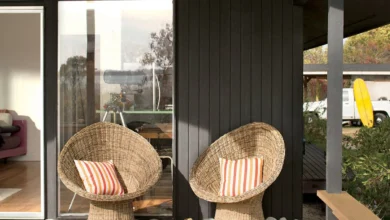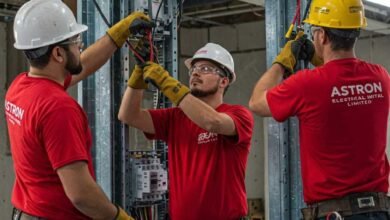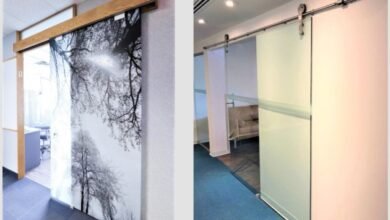How to Select the Right Strainer Type for Your Application

In fluid handling systems – whether water treatment, HVAC, process industries, petrochemical, or pulp & paper – contaminants such as scale, weld spatter, rust particles, debris, or solids are inevitable. Installing a proper strainer upstream protects pumps, valves, instrumentation, heat exchangers, and other downstream equipment from damage, clogging, or erosion. But selecting the right type of strainer is not trivial: the best choice depends heavily on fluid properties, flow regime, maintenance strategy, and allowable downtime.
In this guide, we’ll walk you step-by-step through the major strainer types and how to choose the one best suited to your application.
Why Use a Strainer: Purpose & Benefits
A strainer’s core job is to catch larger particles (not fine filtration) and prevent them from traveling downstream. The benefits include:
- Protecting sensitive equipment (valves, pumps, sensors) from abrasion or clogging
- Reducing maintenance on downstream components
- Extending service life of the system
- Lowering risk of unplanned shutdowns
- Enabling easier maintenance of downstream filtration systems
Because strainers remove larger debris, they typically have lower pressure drops and are simpler than fine filters.
Key Selection Criteria
Choosing correctly involves balancing multiple factors. Here are the primary criteria:
Fluid Type & Characteristics
- Clean fluids vs. high solids / abrasive slurries – harsh fluids demand more robust scrubbing or cleaning designs
- Viscosity – viscous fluids may require larger clearances or special cleaning approaches
- Gas, steam, or two-phase flow – some strainers (e.g. Y-strainers) are more suitable for steam lines; debris should be able to drop into the pocket.
- Corrosiveness / chemical compatibility – material selection (stainless, duplex, alloy) matters
Particle Load, Size & Concentration
- Estimate typical and peak solid load (mass or volume)
- Know size distribution of particles (e.g. > 100 µm, > 500 µm)
- A strainer must have adequate holding capacity so that cleaning intervals are practical
Flow Rate, Pressure, & Temperature
- Higher flows require strainers with more open area and minimal pressure drop
- High pressure or temperature demands strong design (wall thickness, material)
- Some strainer types are more suited for high-pressure service (Y-type up to thousands of psi)
Maintenance Access & Downtime Tolerance
- Can you afford to shut down for cleaning? If not, you’ll need a continuous or self-cleaning style
- How easy is access in the field?
Orientation, Space & Footprint
- Some strainers require horizontal installation (e.g. basket type)
- Others (Y-strainers) may allow vertical orientation (with downward flow)
- Available space and piping layout may force your choice
Material & Corrosion / Erosion Resistance
- Material must resist corrosion, erosion, scaling based on fluid
- Use more robust alloys if exposure to abrasive or corrosive particles
Common Strainer Types & Their Pros/Cons
Here’s a breakdown of major strainer types, typical uses, advantages, and limitations.
Y-Strainer
Description: A compact strainer shaped like a “Y” with a mesh or perforated screen in the branch.
Pros:
- Compact, low footprint
- Can be installed in horizontal or vertical lines (if downward flow)
- Good for moderate particle loads
- Cost-effective
Cons:
- Lower dirt-holding capacity compared to basket types
- Needs relatively frequent cleaning
- May require system shutdown to service
- Not ideal when heavy solids are expected
Typical Applications: Steam lines, small pipelines, instrument protection, less severe debris loads.
Basket (Simplex) Strainer
Description: A chamber with a removable basket (cylindrical or conical) which captures debris.
Pros:
- Higher holding capacity due to larger mesh area
- Lower pressure drop compared with similar-size Y strainers
- Easier service: remove the basket, clean, replace
Cons:
- Typically requires horizontal orientation
- The line must be shut down for cleaning unless duplex/parallel setup
- Larger footprint
Typical Applications: Water systems, cooling water, process lines.
Duplex / Twin Basket Strainer
Description: Two basket strainers in parallel with diverter valves or internal mechanism to switch flow between them.
Pros:
- Continuous operation – one side can be cleaned while the other remains online
- Good for systems that can’t afford downtime
- Same basket-type benefits
Cons:
- Higher cost, more complex valves
- Larger installation footprint
- More complicated control / operation
Typical Applications: Critical process services, fuel oil lines, systems requiring 24/7 uptime.
Automatic / Self-Cleaning Strainer
Description: A strainer equipped with mechanisms or valves that allow automatic cleaning (backwash, mechanical scrapers, etc.) without shutting down the system.
Pros:
- Minimal manual intervention
- Reduced maintenance labor and downtime
- Ideal for continuous processes or remote locations
Cons:
- Higher upfront cost
- More mechanical complexity -> reliability/maintenance of the cleaning mechanism
- Some product loss may occur during backwash cycles
- More limited in handling extremely large debris loads
Typical Applications: Cooling water systems, municipal water, HVAC circuits, continuous process lines.
Other Variants / Special Types
- T-Strainer / Inline Strainer: Similar to basket style but inline; sometimes used when geometry demands.
- Magnetic insert / magnetic screen: For capturing ferrous particles inside another strainer chamber as supplemental protection
- Scraper / mechanical cleaning types: Use internal scrapers to dislodge debris into a purge chamber, then flush out.
- Plate / geometric / temporary strainers: For short-term or startup protection; lower cost but limited capacity (cone, truncated cone, flat plate)
How to Match Strainer Type to Application Scenarios
Here are a few sample scenarios to help you decide:
| Scenario | Recommended Strainer | Rationale |
| Steam line in a plant with moderate debris, acceptable periodic downtime | Y-strainer | Compact, handles high pressure, inexpensive |
| Cooling water feed in a plant, under regular maintenance schedule | Basket (simplex) | Better dirt holding, lower |
| Process line that must remain online continuously | Duplex or Automatic | Provides continuous filtration during maintenance |
| Remote water treatment or HVAC loop with minimal maintenance staff | Automatic self-cleaning | Reduces labor and downtime |
| Startup or construction phase protection | Temporary or plate / cone strainer | Low cost, short-term protection |
For example, in steam systems, Y-type strainers are frequently used, but when there’s an expectation of heavy debris (e.g. during commissioning), a blow-down valve or even a duplex basket may be added.
For water / liquid systems, basket strainers often perform better in minimizing pressure drop and providing higher open area.
If downtime is unacceptable, automatic cleaners (backwashing, mechanical) are preferred.
Sizing, Orientation & Installation Tips
- Open / free straining area: Ensure you choose a strainer whose open area is significantly larger than the pipeline cross-section to reduce pressure loss
- Orientation: For Y-strainers in liquid service, the pocket should point downward so debris falls out, and in steam services, the pocket must be horizontal to avoid water accumulation.
- Support: Heavy basket housings need support at the base
- Blow-down valves: For strainers with blow-down capability, ensure piping for purged debris
- Accessibility: Leave clearance for removing baskets, screens, covers
- Flow direction: Mark flow direction and ensure strainer is on the upstream side of sensitive equipment
- Bypass / parallel piping: For critical systems, include bypass or manifold so cleaning doesn’t require full isolation
Maintenance, Cleaning & Reliability Considerations
- Track differential pressure across the strainer to know when cleaning is needed
- Clean periodically and inspect screens for damage
- Ensure sealing surfaces are clean and gaskets intact
- Replace screens if deformation or wear is evident
- For automatic strainers, maintain the cleaning mechanism (motors, valves, sensors)
- For long-term systems, consider spare basket screens, O-rings, and maintenance kits
Cost & ROI Tradeoffs
- Initial cost vs operational cost: More advanced strainers (duplex, automatic) cost more initially but can reduce downtime and labor costs
- Size / overdesign margin: Oversizing slightly gives lower pressure drop and longer intervals between cleanings
- Life-cycle cost: Consider cost of maintenance, downtime, repairs, replacement parts
- Material / alloy cost: Using more exotic alloys increases cost but may save from corrosion/erosion in the long run
Common Mistakes & Pitfalls
- Undersizing the strainer (low open area) → high pressure drop
- Choosing Y-strainer when heavy contamination is expected
- Not considering maintenance access or insufficient clearance
- Forgetting blow-down or purge piping
- Not including a bypass or alternate path
- Ignoring the fluid’s abrasiveness or chemical properties
- Overlooking orientation or installation constraints
- Selecting an automatic cleaner without considering reliability in your service
- Skipping differential pressure monitoring
Conclusion & Call to Action
Selecting the right strainer is critical to protect your fluid systems, reduce maintenance, and avoid costly downtime. The ideal choice depends on fluid properties, expected particle load, maintenance philosophy, installation constraints, and total cost of ownership.
At SureFlow Equipment, we supply a wide range of strainer types – including Y, basket, duplex, automatic self-cleaning – and can help you pick the optimal solution for your system. Contact us today with your flow data, particle load estimates, and system constraints, and we’ll help you specify the best strainer solution.
FAQs
Q: Can a Y-strainer handle high pressure?
Yes – Y-strainers are available in high-pressure designs (some up to 6,000 psi or more) if constructed properly.
Q: When should I prefer a duplex or automatic strainer?
When your process cannot be shut down for cleaning, continuous filtration is required – then duplex or automatic self-cleaning designs are ideal.
Q: What mesh size should I pick?
Choose mesh (or perforation) based on the smallest particle you wish to trap; ensure screen strength and open area are adequate for flow.
Q: Does adding a strainer significantly increase pressure drop?
If properly sized with ample open area, the pressure drop can be kept minimal; however, undersized or clogged strainers can cause high.
Q: Can I retrofit an automatic cleaner to an existing basket strainer?
In some cases yes, but the retrofit must match hydraulic, mechanical, and piping constraints; often it’s more efficient to replace with a proper automatic unit.




